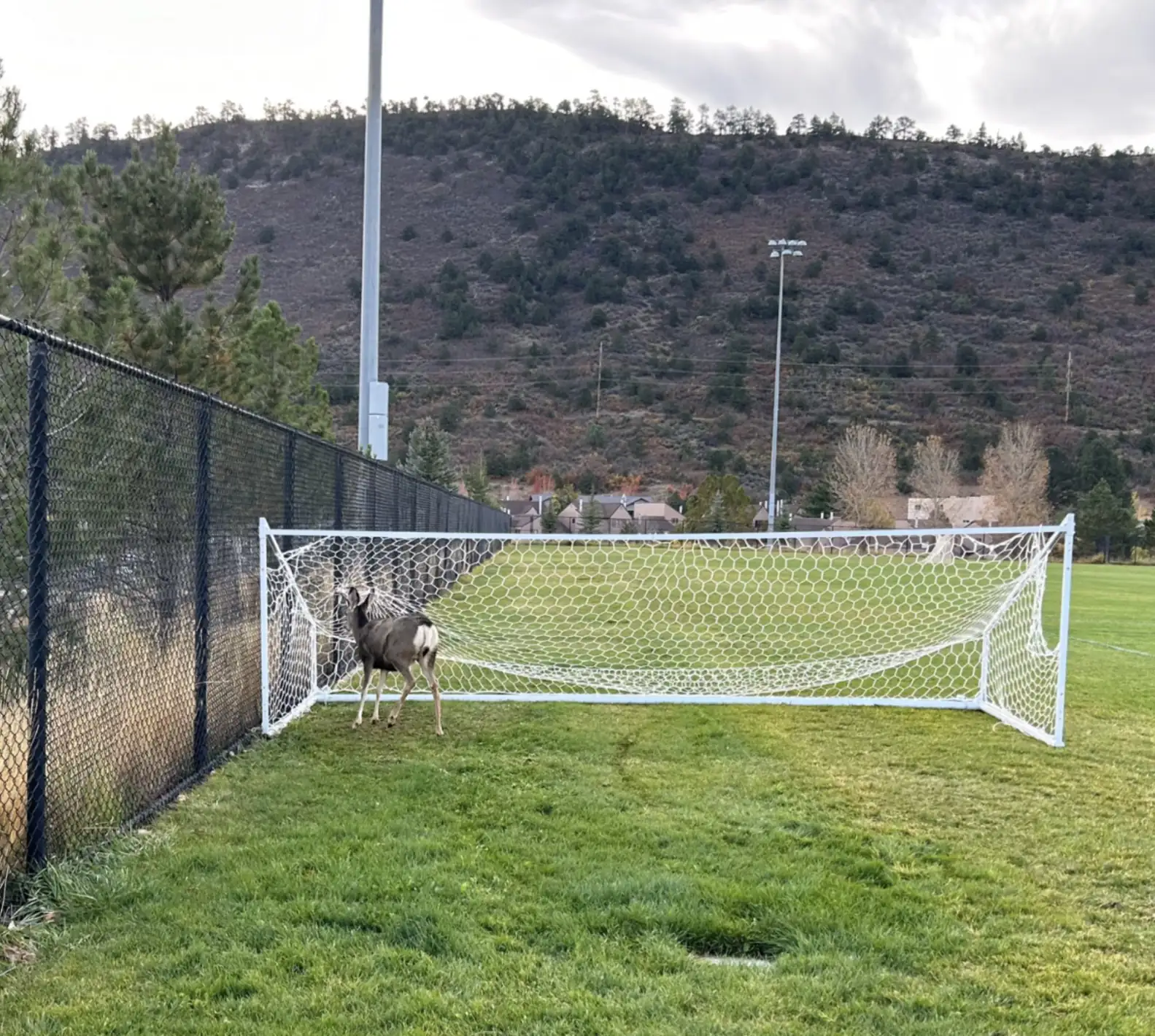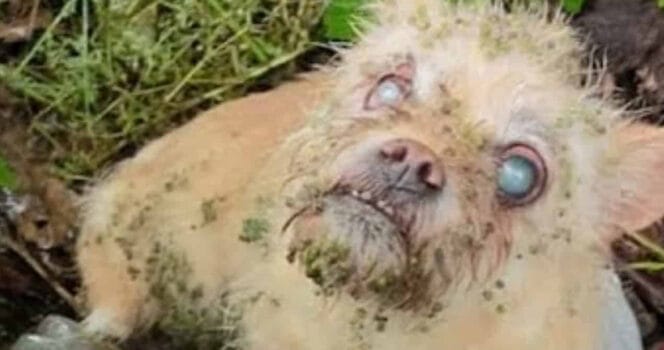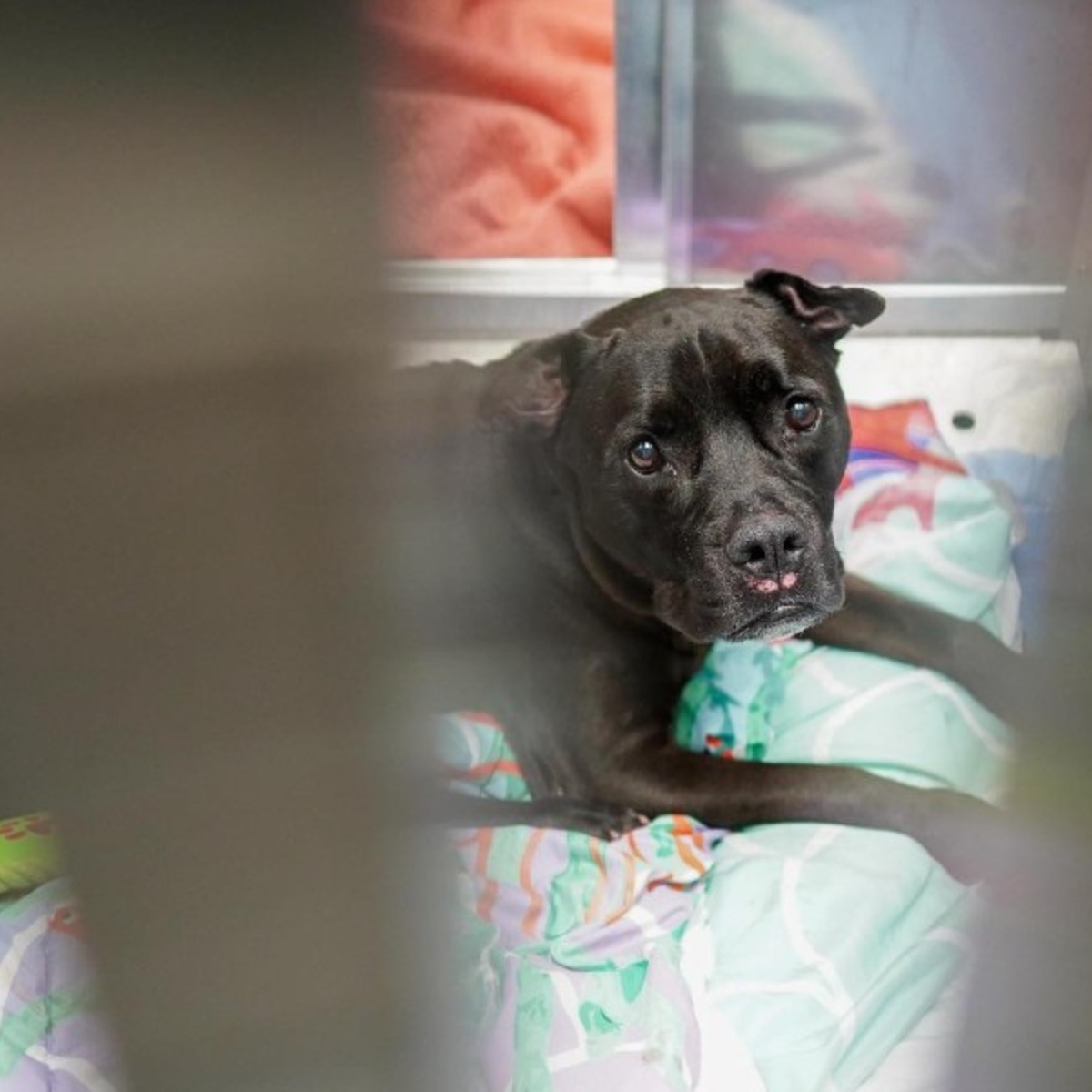When a large buck recently got his antlers tangled in a soccer net in Durango, Colorado, the anxious animal thrashed and struggled to free himself, only making his situation worse.
Thankfully, someone reported the buck to Colorado Parks and Wildlife. Rescuers at the department knew exactly what to do, and they were glad members of the public hadn’t intervened.
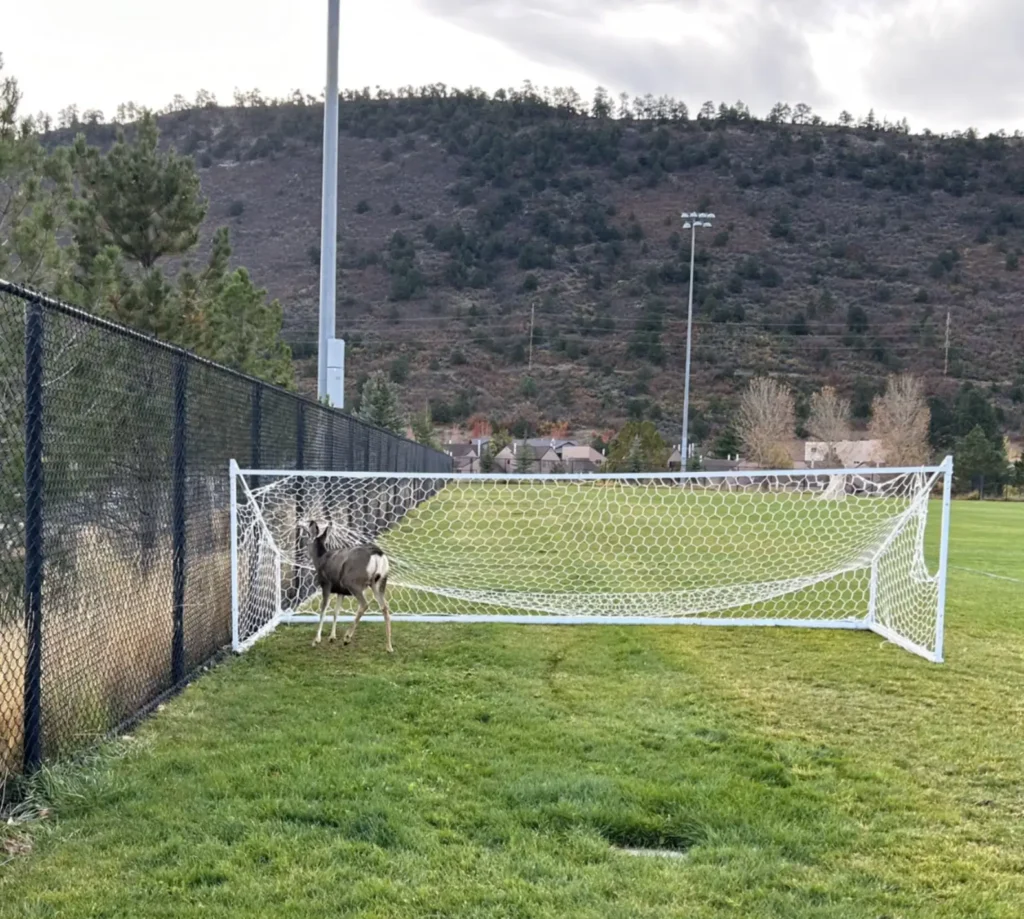
“We regularly get these kinds of reports from the public, especially this time of year,” John Livingston, a public information officer for Colorado Parks and Wildlife, told The Dodo. “A wild animal in distress can behave more aggressively, so it’s important people don’t try to free it themselves.”
District wildlife manager Luke Clancy and assistant area wildlife manager Steve McClung safely sedated the buck before carefully cutting the netting off of his antlers.
Though the rescuers didn’t know exactly how the buck became trapped in the net, they had some theories.
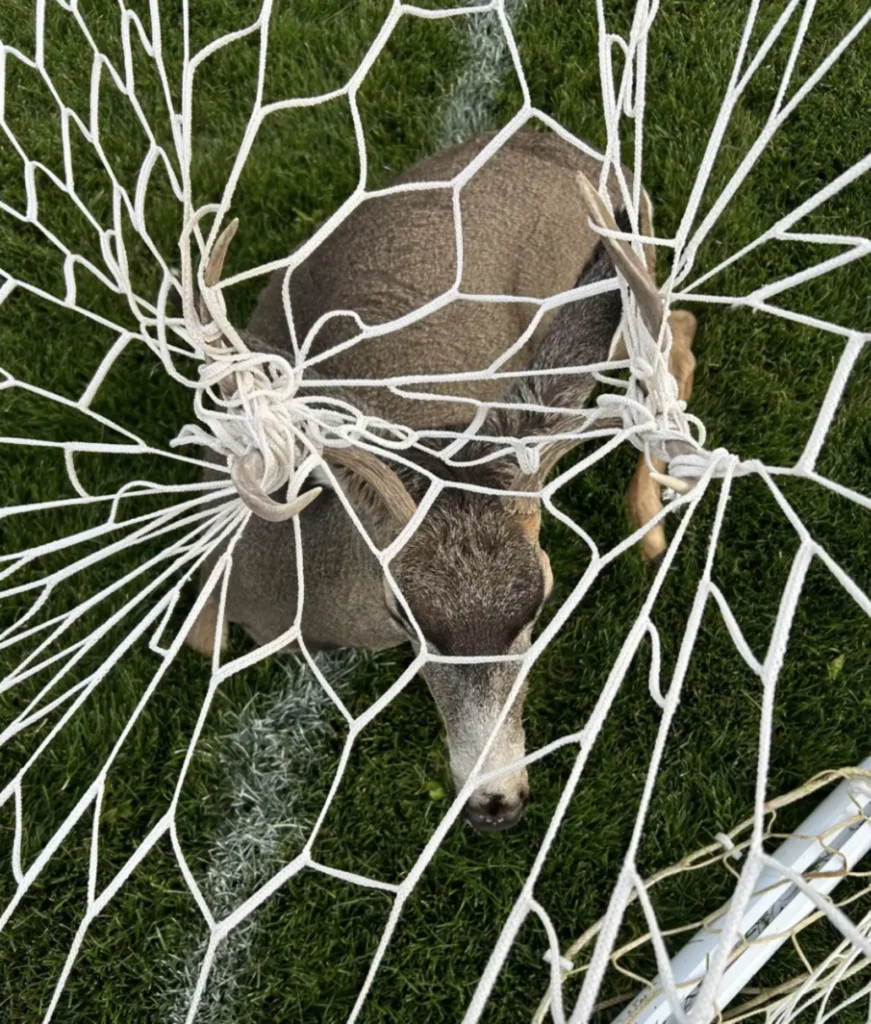
“Bucks can be especially prone to these situations this time of year,” Livingston said. “During the rut — or breeding season — bucks will rub their antlers on objects to mark [their] territory and signal their presence to other bucks … In this specific case, the buck may have been pursuing does or other bucks and simply not noticed the netting. Or, it’s possible it was curious and got accidentally stuck.”
After receiving a sedation reversal drug, the buck slowly got back on his feet. Rescuers moved the soccer goal away, and the thankful animal hurried back to his home in the wild.
Animal experts insist that members of the public do what they can to help prevent future situations like this one.

“We ask that people continually assess their properties for tangle hazards and … remove items such as hammocks when they are not in use and to always hang holiday lights where elk and deer won’t get stuck in them,” Livingston said. “We also ask people to keep in mind sporting equipment and to put it away properly when it’s not in use.”
If everyone does their part, bucks like this one won’t have to worry.
“Here in southwest Colorado, we live in very good wildlife habitat, and it’s up to all of us to be good neighbors to our wildlife,” Livingston said. “That means letting them live their natural, wild lives and not feeding them, too.”
